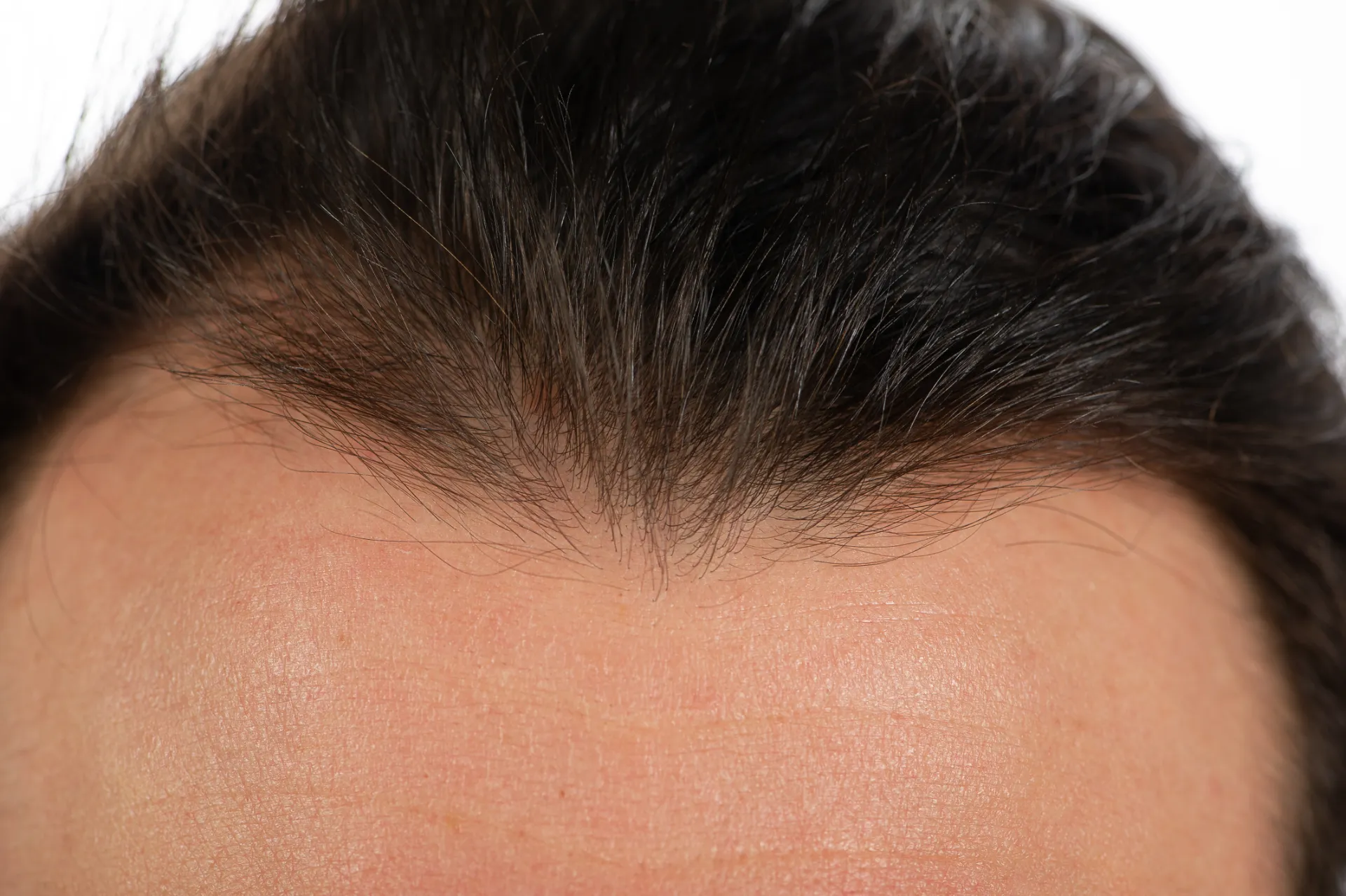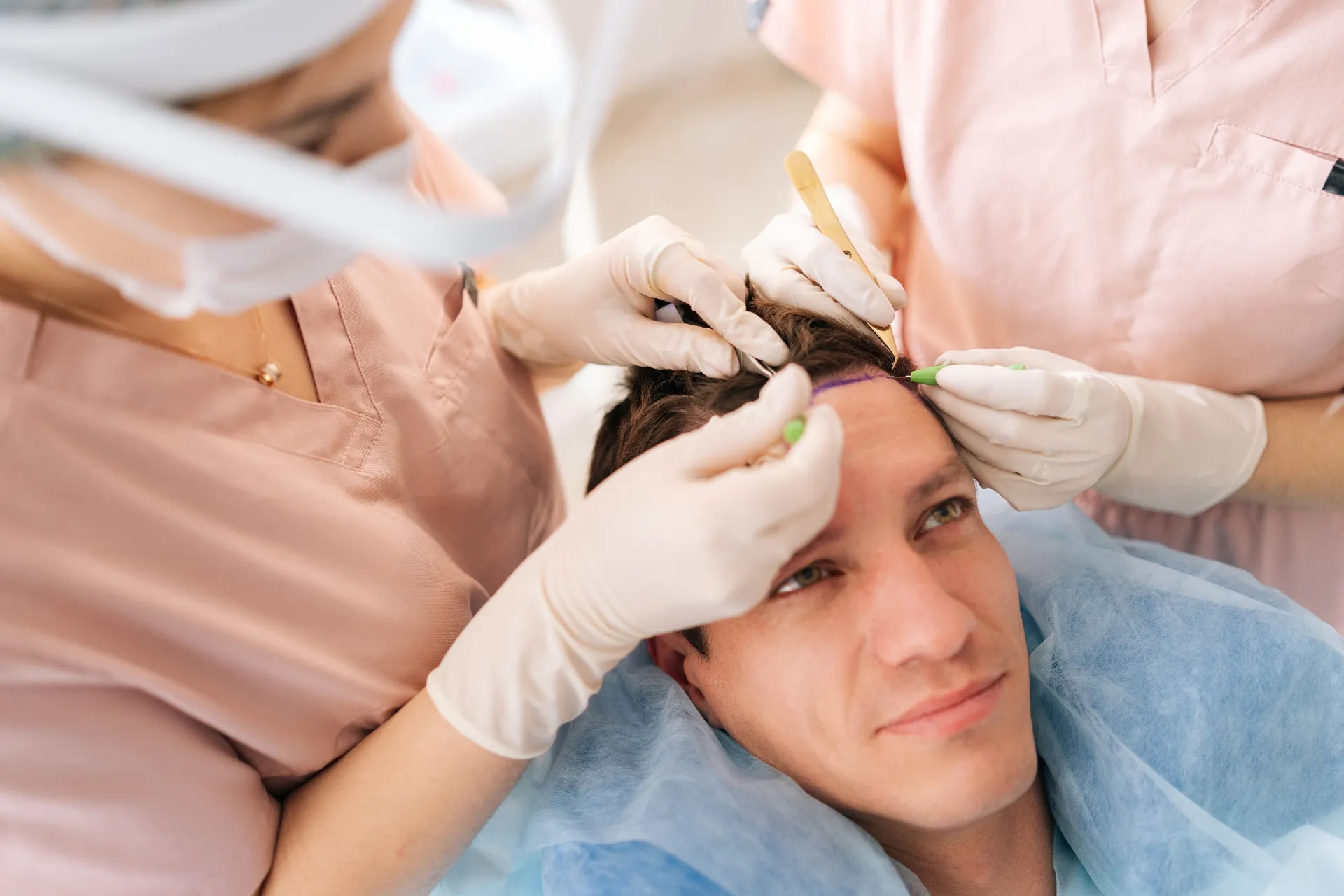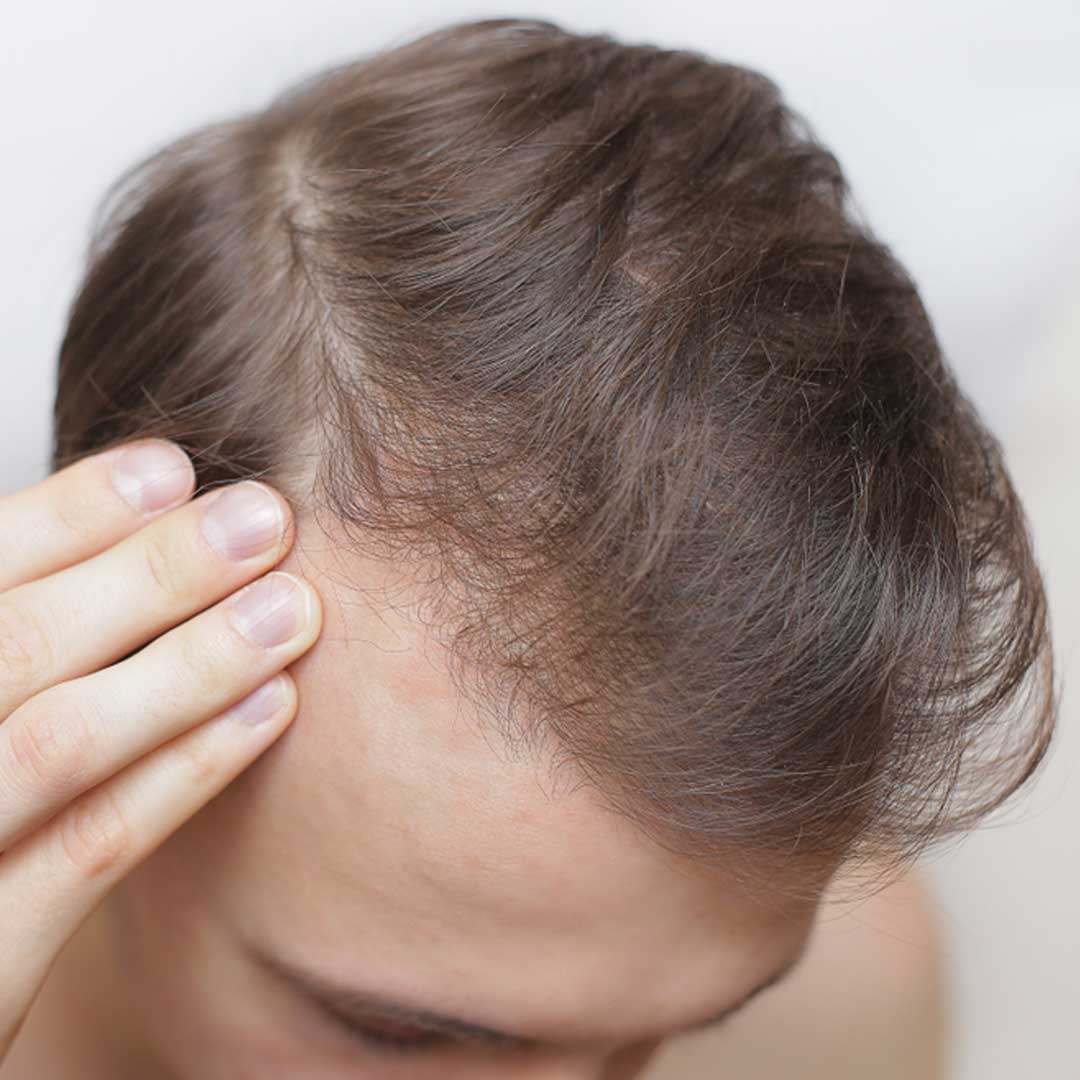
Hairline Lowering Surgery

Reclaim Your Confidence With a Natural-Looking Hairline
If you’ve ever felt that your forehead is too prominent or that your hairline is receding, hairline lowering could be the solution you’ve been seeking. Many individuals experience dissatisfaction with their hairline due to genetics, hair loss or previous cosmetic procedures. For many, it can create a sense of imbalance in facial proportions, making the forehead appear larger. Fortunately, modern surgical techniques offer a safe and effective way to achieve a more balanced and aesthetically pleasing hairline.
What Is Hairline Lowering?
Hairline lowering surgery, also known as forehead reduction, is an aesthetic procedure designed to decrease the height of the forehead by advancing the hair-bearing scalp forward. This results in a lower, more proportionate hairline.
What Does Hairline Lowering Treat?
Hairline lowering is ideal for addressing a variety of concerns related to hairline and forehead appearance, including:
- High foreheads
- Receding hairlines
- Asymmetrical hairlines
- Foreheads that appear disproportionately large
- Restoration of a natural hairline after hair loss

Who Are Good Candidates for Hairline Lowering?

This procedure is suitable for patients of any gender who desire a more balanced facial appearance. Good candidates for hairline lowering surgery are individuals who:
- Are in good overall health
- Have a high or receding hairline
- Are transitioning male-to-female patients who might benefit from reducing any prominent forehead and brow ridge features simultaneously
- Have sufficient scalp laxity, allowing for the scalp to be moved forward
- Have realistic expectations about the outcomes of the procedure
- Are non-smokers or willing to quit smoking before surgery
How to Prepare for Hairline Lowering
Preparing for hairline lowering surgery involves several steps to promote a smooth procedure and recovery. Here’s how you can prepare:
- Consultation: Schedule a consultation with board-certified facial plastic surgeon Dr. Brock Ridenour to determine if you’re a suitable candidate. At your consultation, you and Dr. Ridenour will discuss your goals, medical history and any medications you’re currently taking.
- Medical Evaluation: You may need a medical evaluation to confirm you’re in good health. Dr. Ridenour will advise you about this at your consultation.
- Medication Adjustments: Follow your surgeon’s advice regarding any medications you should stop taking before the surgery.
- Smoking: If you smoke, it’s crucial to quit several weeks before the surgery to allow for optimal healing.
- Arrange for Assistance: Plan for someone to drive you home after the procedure and help you for the first few days of recovery.

What to Expect During Your Hairline Lowering Procedure
Hairline lowering surgery is typically performed under IV sedation anesthesia. During the procedure, an incision is made along the frontal hairline and curved back into the scalp. The scalp is then elevated and moved forward to overlap a portion of the non-hair-bearing forehead. The excess forehead skin is removed, and the new hairline is meticulously designed to look natural and harmonious with your facial features. Anchoring the scalp to the bone prevents it from stretching back, providing long-lasting results. The incision is closed with sutures, and a bandage is applied to protect the area.

What to Expect During Hairline Lowering Recovery
Recovery from hairline lowering surgery involves several stages, and it’s essential to follow your surgeon’s post-operative instructions closely. Here’s a timeline of what to expect:
- First Few Days: You’ll experience some swelling, bruising and discomfort, which can be managed with prescribed pain medications. Keep your head elevated to reduce swelling.
- First Week: Most patients can return to light activities, but you should avoid strenuous activities and exercise.
- Two to Three Weeks: Stitches are typically removed, and you can gradually resume more regular activities.
- One Month: Most swelling and bruising should subside, and you’ll begin to see the initial results of your surgery.
What Results Can I Expect From Hairline Lowering?
Hairline lowering surgery provides immediate results, but the final outcome will be fully visible after a few months as residual swelling resolves and your hairline settles into its new position. You can expect a more proportionate forehead and a natural-looking hairline that enhances your overall facial harmony.
Are the Results Permanent?
Hairline lowering surgery offers long-lasting results, giving you a more proportionate and aesthetically pleasing hairline. However, the permanence of these results depends on several factors, including your overall health, lifestyle choices and how well you follow your surgeon’s aftercare instructions.
While the procedure provides significant and enduring improvements, it’s important to recognize that the natural aging process will continue, potentially causing changes due to lost skin elasticity and other aging factors. However, with proper care, your improved hairline position and overall aesthetic can be maintained for many years.
How Much Does Hairline Lowering Cost?
The cost of hairline lowering surgery can vary based on several factors, including the surgeon’s experience, the procedure’s complexity and the practice’s geographic location. During your consultation, you’ll receive a detailed breakdown of the costs involved, including:
- Surgeon’s fee
- Anesthesia fees
- Facility costs
- Pre-operative and post-operative care

Are There Other Hair Restoration Options for a Receding Hairline?

While hairline lowering surgery is an excellent option for addressing a large forehead by advancing the hair-bearing scalp forward, other effective hair restoration techniques are available for treating a receding hairline and overall hair loss or thinning. Two of the most popular methods are follicular unit extraction (FUE) and follicular unit transplantation (FUT).
FUE involves extracting individual hair follicles directly from a donor area, typically the back or sides of the scalp, and implanting them into the thinning or balding regions, such as a receding hairline. In contrast, FUT involves removing a scalp strip from the donor area and dividing it into individual follicular units for transplantation. This method can transplant a larger number of grafts in a single session, which is advantageous for those with more extensive hair loss. The choice between these methods or hairline lowering surgery depends on the extent of hair loss, patient preference and Dr. Ridenour’s recommendation.
Enhance Your Facial Proportions With Hairline Lowering in St. Louis
Are you ready to achieve a smaller forehead with a more balanced and attractive hairline? At Ridenour Plastic Surgery, we offer personalized hairline lowering procedures designed to meet your unique needs.
Contact us to learn more about hairline lowering and how it can benefit you today!
